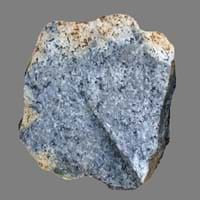Syenite and Andesite
Definition
Definition
Syenite is a coarse-grained igneous rock which is composed mainly of alkali feldspar and various ferromagnesian minerals
Andesite is a dark, fine-grained, brown or greyish intermediate volcanic rock which is a commonly found in lava
History
Origin
Unknown
North America
Discoverer
Unknown
Unknown
Etymology
From French syénite, from Latin Syenites (lapis ) (stone) of Syene
From Andes mountains, where it is found in abundance
Class
Igneous Rocks
Igneous Rocks
Sub-Class
Durable Rock, Medium Hardness Rock
Durable Rock, Hard Rock
Family
Group
Plutonic
Volcanic
Other Categories
Coarse Grained Rock, Fine Grained Rock, Medium Grained Rock, Opaque Rock
Fine Grained Rock, Opaque Rock
Texture
Texture
Earthy
Aphanitic to Porphyritic
Color
Brown, Buff, Cream, Green, Grey, Pink, White
Bluish - Grey, Grey, Pink, Yellow
Maintenance
Less
More
Durability
Durable
Durable
Water Resistant
Yes
No
Scratch Resistant
Yes
Yes
Stain Resistant
No
Yes
Wind Resistant
Yes
No
Acid Resistant
Yes
Yes
Appearance
Banded and Foilated
Dull and Soft
Uses
Architecture
Interior Uses
Flooring, Homes, Hotels, Interior Decoration
Decorative Aggregates, Floor Tiles, Homes, Interior Decoration, Kitchens
Exterior Uses
As Building Stone, As Facing Stone, Paving Stone, Garden Decoration, Office Buildings
Office Buildings, Roof Tiles
Other Architectural Uses
Curbing
Curbing
Industry
Construction Industry
As Dimension Stone, Cement Manufacture, Construction Aggregate, for Road Aggregate, Landscaping, Making natural cement, Manufacture of Magnesium and Dolomite Refractories
Cobblestones, Construction Aggregate, for Road Aggregate
Medical Industry
Not Yet Used
Not Yet Used
Antiquity Uses
Artifacts, Monuments, Sculpture, Small Figurines
Artifacts, Monuments, Sculpture, Small Figurines
Other Uses
Commercial Uses
Cemetery Markers, Creating Artwork
Commemorative Tablets, Creating Artwork
Types
Types
Shonkinite
Icelandite
Features
Available in Lots of Colors and Patterns, Is one of the oldest rock, Matrix variable
Generally rough to touch, High silica content, Is one of the oldest rock
Archaeological Significance
Monuments
Used
Used
Famous Monuments
Data Not Available
Middle of the Earth in Ecuador
Sculpture
Used
Used
Famous Sculptures
Data Not Available
Data Not Available
Pictographs
Used
Not Used
Petroglyphs
Used
Not Used
Figurines
Used
Used
Fossils
Absent
Absent
Formation
Formation
Syenites are formed due to alkaline igneous activities and are generally formed in thick continental crustal areas or in Cordilleran subduction zones.
Andesite is a fine-grained igneous rock that forms when the magma is erupted onto the surface and is crystallized quickly.
Composition
Mineral Content
Amphibole, Biotite, Feldspar, Hornblade, Micas, Muscovite or Illite, Plagioclase, Pyroxene, Quartz
Amphibole, Apatite, Biotite, Feldspar, Garnet, Hornblade, Ilmenite, Magnetite, Plagioclase, Pyroxene, Zircon
Compound Content
Aluminium Oxide, CaO, Iron(III) Oxide, FeO, Potassium Oxide, MgO, MnO, Sodium Oxide, Phosphorus Pentoxide, Silicon Dioxide, Titanium Dioxide
Silicon Dioxide
Transformation
Metamorphism
Yes
Yes
Types of Metamorphism
Burial Metamorphism, Cataclastic Metamorphism, Contact Metamorphism, Hydrothermal Metamorphism, Impact Metamorphism, Regional Metamorphism
Burial Metamorphism, Cataclastic Metamorphism, Contact Metamorphism, Hydrothermal Metamorphism, Impact Metamorphism, Regional Metamorphism
Weathering
Yes
Yes
Types of Weathering
Biological Weathering, Chemical Weathering, Mechanical Weathering
Biological Weathering, Chemical Weathering, Mechanical Weathering
Erosion
Yes
Yes
Types of Erosion
Chemical Erosion, Coastal Erosion, Glacier Erosion, Sea Erosion, Water Erosion, Wind Erosion
Chemical Erosion, Coastal Erosion, Glacier Erosion
Properties
Physical Properties
Hardness
5.5-6
7
Grain Size
Medium to Fine Coarse Grained
Very fine-grained
Fracture
Not Available
Uneven
Streak
White
White
Porosity
Less Porous
Less Porous
Luster
Subvitreous to Dull
Vitreous
Compressive Strength
150.00 N/mm2
14
225.00 N/mm2
7
Cleavage
Perfect
Not Available
Toughness
Not Available
1.1
Specific Gravity
2.6-2.7
2.5-2.8
Transparency
Opaque
Opaque
Density
2.6-2.8 g/cm3
2.11-2.36 g/cm3
Thermal Properties
Specific Heat Capacity
0.92 kJ/Kg K
10
2.39 kJ/Kg K
2
Resistance
Heat Resistant, Impact Resistant, Wear Resistant
Heat Resistant, Pressure Resistant, Wear Resistant
Reserves
Deposits in Eastern Continents
Asia
China, India, Iran, Saudi Arabia, Sri Lanka, Taiwan, Thailand, Turkey, Vietnam
India, Indonesia, Japan, Nepal, South Korea
Africa
Angola, Egypt, Madagascar, Namibia, Nigeria, South Africa
Egypt, Ethiopia, Morocco, Namibia, South Africa, Tanzania
Europe
Bulgaria, England, Germany, Norway, Romania, Switzerland
Austria, Finland, Germany, Italy, Romania, Turkey, United Kingdom
Others
Not Yet Found
Not Yet Found
Deposits in Western Continents
North America
USA
Mexico, USA
South America
Brazil, Chile
Argentina, Bolivia, Chile, Colombia, Ecuador, Peru, Venezuela
Deposits in Oceania Continent
Australia
New Zealand, Queensland, South Australia, Western Australia
New South Wales, New Zealand, Western Australia
All about Syenite and Andesite Properties
Know all about Syenite and Andesite properties here. All properties of rocks are important as they define the type of rock and its application. Syenite and Andesite belong to Igneous Rocks.Texture of Syenite is Earthy whereas that of Andesite is Aphanitic to Porphyritic. Syenite appears Banded and Foilated and Andesite appears Dull and Soft. The luster of Syenite is subvitreous to dull while that of Andesite is vitreous. Syenite is available in brown, buff, cream, green, grey, pink, white colors whereas Andesite is available in bluish - grey, grey, pink, yellow colors. The commercial uses of Syenite are cemetery markers, creating artwork and that of Andesite are commemorative tablets, creating artwork.
|
||
|
||
|










